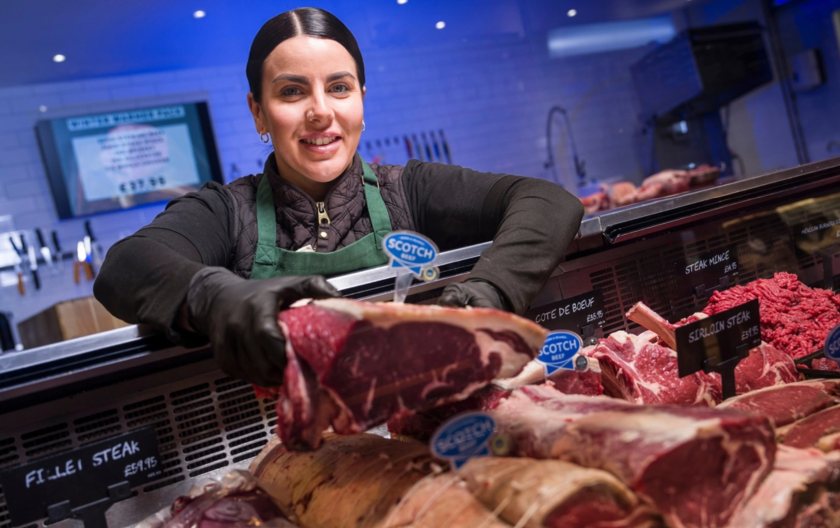
A new survey reveals that the Scottish public overwhelmingly prefer home-grown red meat—even if imports are 30 percent cheaper.
Research shows that 90% of consumers would choose Scottish beef, lamb, and pork over imported options, despite a significant price difference.
And nearly three-quarters (73%) told Quality Meat Scotland (QMS) they actively seek out Scottish-produced red meat in shops and butchers.
Key reasons driving this loyalty include supporting local farmers (74%) and the rural economy (72%), as well as valuing quality (54%), freshness (52%), and traceability (54%).
With mounting concerns over food security, rural employment, and agricultural sustainability, the findings are set to reaffirm strong public support for Scotland’s red meat sector.
However, NFU Scotland's 2024 ShelfWatch report highlights a worrying rise in imported red meat on supermarket shelves, sparking fears over the future of domestic sourcing.
Over 80% of those surveyed are concerned about increasing dependence on imported meat.
Sarah Millar, QMS chief executive, said: “Our independently conducted research clearly shows that people in Scotland want to eat local red meat even if alternatives from outside of the UK are cheaper.
"This firm commitment includes but goes beyond the high quality, freshness and traceability of our world-renowned produce; with the top reason for this choice being to support our hard-working farmers and the economy.
“It is heartening to see this societal support and recognition of the wider value our agriculture sector brings across Scotland, including to some of our most remote and rural communities.”
Recent economic modelling by QMS points to a significant growth opportunity for Scotland’s beef industry.
By the year 2030, the UK will need an additional 278,000 tonnes of beef annually to meet demand.
To reduce import reliance, Scotland must increase production by 22,000 tonnes per year, requiring an estimated 79,000 more breeding cows than currently projected.
This expansion could add £281 million in annual output and contribute £76 million in Gross Value Added (GVA) to the Scottish economy, according to QMS.
Without urgent investment, imports are forecast to rise by 124,000 tonnes by 2030, further eroding the market for Scottish beef.
At present, Scotland’s red meat processing plants are running at only 69–73% capacity.
“We have a unique opportunity to grow Scotland’s beef herd by nearly 80,000 cattle," said Ms Millar.
"QMS, alongside industry partners across the red meat supply chain, will be focussing on building confidence and inspiring investment and action amongst farmers to meet our domestic demand."
She added: “This isn’t just about economics; it’s about resilience, traceability, quality, and food security.
"We have the infrastructure and the ambition – but we need a shared commitment from industry, government, and consumers to make it happen.”
